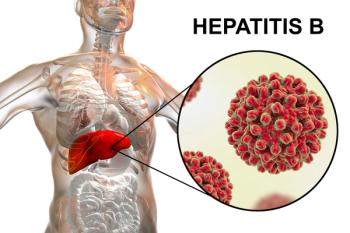An intervention combining liraglutide with a lifestyle intervention was more effective for children with obesity aged 6 to 11 years old compared with the study placebo. With most literature surrounding weight-loss medications focusing on adults or children 12 years or older, recent findings that liraglutide can help children with obesity aged 6 to 11 speaks further to the overall efficacy of weight-loss medications for the management of obesity.
“The glucagon-like peptide-1 (GLP-1) analogues liraglutide and semaglutide are approved by the Food and Drug Administration (FDA) and the European Medicines Agency for long-term weight management in adolescents 12 years of age or older with obesity, as adjunct treatments to lifestyle interventions,” wrote authors of a study published in the New England Journal of Medicine.1
Put It Into Practice
Incorporate these strategies into your pharmacy practice to improve patient outcomes.
- Promote adherence and lifestyle support so that children prescribed liraglutide for obesity can properly balance their interventions.
- Monitor adverse effects and drug reactions so that children and their families can be certain that liraglutide is right for them.
- Offer medication counseling for families who may be new to weight-loss drugs like liraglutide and other GLP-1s.
GLP-1s have taken the pharmaceutical industry by storm both because of their efficacy in treating weight-loss as well as other comorbidities like cardiovascular disease (CVD) and diabetes. Indeed, according to the American Society of Health-System Pharmacists 2024 report, weight-loss drugs have overtaken the prescription drug market and were key drivers of the 13.5% increase in drug expenditures in 2023.2
However, when it comes to nonmonogenic, nonsyndromic weight-loss drugs, there has not yet been a GLP-1 approved for use amongst children with obesity under 12 years old.1 Instead, lifestyle interventions, including a healthy amount of nutritious food and physical activity, have been the primary modes of managing obesity for children under 12. But as GLP-1s become more popular and effective for weight-loss—and lifestyle interventions continue to show modest results—researchers are now exploring the use of GLP-1s for younger age groups.
“In this phase 3a trial, which consisted of a 56-week treatment period and a 26-week follow-up period, we randomly assigned children (6 to <12 years of age) with obesity, in a 2:1 ratio, to receive either once-daily subcutaneous liraglutide at a dose of 3.0 mg (or the maximum tolerated dose) or placebo, plus lifestyle interventions. The primary end point was the percentage change in the body-mass index (BMI; the weight in kilograms divided by the square of the height in meters),” wrote authors of the study.1
READ MORE: A Deeper Understanding of GLP-1 Mechanism of Action Will Open Doors for Future Uses
A total of 82 participants were included in the randomized trial, with 56 receiving liraglutide and 26 placed into a placebo group. Participants were monitored throughout a 56-week period, with a 5% reduction in BMI as the marker for liraglutide to be considered effective.
For individuals in the liraglutide group, the mean percentage change in BMI was a 5.8% decrease, while individuals in the placebo group experienced a mean BMI increase of 1.6%. Furthermore, 46% of the liraglutide group saw a BMI reduction of at least 5%, with only 9% of the placebo group achieving a 5% BMI reduction.
“At week 56, the difference between the liraglutide and placebo groups was −7.4 percentage points for the change from baseline in BMI and −8.4 percentage points for the change from baseline in body weight,” wrote the authors.1 “This phase 3a trial adds to the base of evidence for the management of pediatric obesity. The superiority of liraglutide over placebo was shown with respect to the primary end point.”
Researchers mentioned that results of this phase 3a clinical trial will advise future studies regarding GLP-1 use among children under 12. A previous study analyzing BMI in youth populations found that, on average, the most extreme changes in weight occur between the years of 2 and 6. While the use of GLP-1s are gradually being considered for younger populations, it wouldn’t be unlikely for researchers to begin exploring the use of weight-loss drugs for children under the age of 6.
In line with other studies regarding GLP-1 use for treating CVD and diabetes, researchers also found that liraglutide helped improve diastolic blood pressure and glycated hemoglobin level.1 Indeed, previous trials have highlighted the efficacy of semaglutide to treat CVD and patients with diabetes experiencing chronic kidney disease.3
However, as researchers explore the use of GLP-1s for treating conditions aside from obesity, they too will continue to study GLP-1s among younger populations that are overweight. “I definitely think this is a realization that diet and exercise is not going to do it for a number of teens who are struggling with this—maybe the majority,” Stephanie Byrne, MD, a pediatrician in Los Angeles, told STAT News.4
With adult and childhood obesity persisting as a major health concern within the US, researchers and patients alike are looking toward medications to expedite weight-loss across the country. The results of this study should serve as yet another page in the story of GLP-1s and their rise to popularity among older adults, adolescents, and now children.
“This trial showed that among children 6 to younger than 12 years of age with obesity, liraglutide at a dose of 3.0 mg plus lifestyle interventions resulted in a greater reduction in BMI than placebo plus lifestyle interventions,” concluded the authors.1
READ MORE: Teva Pharmaceuticals Launches Liraglutide Injection 1.8 mg, First Generic GLP-1 in the US
Pharmacy practice is always changing. Stay ahead of the curve: Sign up for our free Drug Topics newsletter and get the latest drug information, industry trends, and patient care tips, straight to your inbox.
References
1. Fox CK, Barrientos-Pérez M, Bomberg EM. Liraglutide for children 6 to <12 years of age with obesity: A randomized trial. New England Journal of Medicine. Published online September 10, 2024. doi.org/10.1056/nejmoa2407379
3. Rubin R. Could GLP-1 receptor agonists like semaglutide treat addiction, Alzheimer disease, and other conditions? JAMA. Published online April 19, 2024. doi:10.1001/jama.2024.1017
4. Aleccia J. Pediatricians recommend weight-loss drugs and surgery for children with obesity. STAT News. January 9, 2023. Accessed September 16, 2024. https://www.statnews.com/2023/01/09/pediatricians-children-obesity/












































































































































































































